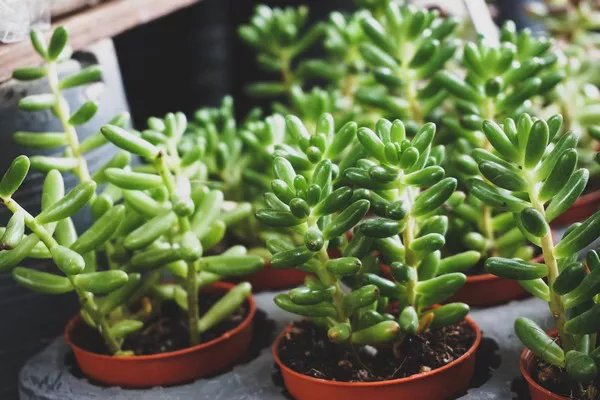Succulent plants, with their captivating array of shapes and colors, have gained immense popularity among plant enthusiasts and homeowners alike. The term “succulent” refers to plants that store water in their leaves, stems, or roots, enabling them to thrive in arid environments. While these hardy plants are renowned for their ability to withstand dry conditions, proper feeding remains a crucial aspect of succulent care. In this comprehensive guide, we will explore the intricacies of feeding succulent plants, from understanding their unique nutritional needs to implementing effective feeding routines for optimal growth and vibrancy.
Understanding the Unique Traits of Succulent Plants
Succulent plants belong to a diverse group that includes cacti, aloe, echeveria, and many more. What sets succulents apart is their specialized adaptation to arid environments. These plants have evolved to store water in specialized tissues, such as leaves and stems, allowing them to endure prolonged periods of drought. This unique trait not only contributes to their resilience but also influences their nutritional requirements. While succulents have evolved to thrive in nutrient-deficient soils, providing them with the right balance of essential nutrients is key to unlocking their full potential.
The Importance of Well-Draining Soil for Succulents
Before delving into the specifics of feeding succulents, it’s crucial to emphasize the significance of well-draining soil. Succulents are highly sensitive to waterlogged conditions, and stagnant water around their roots can lead to root rot and other issues. Therefore, using a well-draining soil mix is essential for promoting aeration and preventing excess moisture retention. A typical succulent soil mix may include components like perlite, coarse sand, and well-decomposed organic matter. This foundation sets the stage for successful succulent cultivation and efficient nutrient absorption.
Essential Nutrients for Succulent Plants
Like all living organisms, succulent plants require essential nutrients to support their growth, reproduction, and overall health. The primary macronutrients needed by succulents include nitrogen (N), phosphorus (P), and potassium (K). Nitrogen promotes leafy green growth, phosphorus supports root development and flowering, while potassium enhances overall plant vigor and resilience. In addition to these macronutrients, succulents also benefit from secondary nutrients such as calcium, magnesium, and sulfur, as well as micronutrients like iron, zinc, and manganese. Balancing these nutrients is essential for providing a well-rounded and nourishing diet for succulent plants.
Choosing the Right Fertilizer for Succulents
Selecting an appropriate fertilizer is a crucial step in feeding succulent plants effectively. Specialized succulent or cactus fertilizers are commercially available and are formulated to meet the unique nutritional needs of these water-storing plants. These fertilizers typically have lower nitrogen levels to prevent excessive vegetative growth, which can make succulents more susceptible to pests and diseases. It’s advisable to choose a balanced, water-soluble fertilizer with a formulation like 10-10-10 or 14-14-14, ensuring a gradual and controlled release of nutrients.
See Also: How to succulents grow: A How-To Guide
When and How Often to Feed Succulents
The frequency of feeding succulents depends on various factors, including the type of fertilizer used, the growing environment, and the specific needs of the plant. In general, succulents benefit from a feeding routine during the growing season, which typically spans from spring to early fall. During this period of active growth, feeding can occur every 2-4 weeks, depending on the strength of the fertilizer. It’s crucial to dilute the fertilizer to half or quarter strength to prevent the risk of over-fertilization, which can harm succulents. As winter approaches, succulents enter a dormant phase, and feeding frequency should be reduced or halted altogether.
Feeding Methods for Succulent Plants
Several methods can be employed to feed succulents, each with its advantages depending on the preferences of the grower and the specific needs of the plants:
Liquid Fertilization: Water-soluble fertilizers can be dissolved in water and applied directly to the soil. This method allows for precise control over nutrient concentrations and is particularly effective during the growing season.
Top-Dressing with Granular Fertilizer: Granular fertilizers can be sprinkled on the soil surface around the base of the succulent. This method provides a slow-release of nutrients over time and is convenient for those who prefer less frequent applications.
Foliar Feeding: Some growers opt for foliar feeding, where a diluted fertilizer solution is sprayed directly onto the succulent’s leaves. While this method allows for rapid nutrient absorption, it’s essential to avoid applying fertilizer to the extent that it accumulates and causes leaf burn.
Organic Amendments: Incorporating organic amendments, such as well-rotted compost or compost tea, can provide a natural source of nutrients for succulents. Organic materials contribute to soil structure and microbial activity, fostering a healthy growing environment.
Signs of Nutrient Deficiency or Over-Fertilization
Monitoring the health of succulent plants is crucial to identifying signs of nutrient deficiency or over-fertilization. Common signs of nutrient deficiency include stunted growth, yellowing of leaves (chlorosis), and reduced flowering. On the other hand, symptoms of over-fertilization may include leaf burn, wilting, and a general decline in plant health. Adjusting the feeding routine and ensuring proper watering practices can help correct these issues and maintain the well-being of succulent plants.
Watering Practices: A Companion to Feeding Succulents
While feeding succulents is essential, it must be complemented by appropriate watering practices. Succulents are adapted to survive in arid conditions, and overwatering poses a significant risk to their health. The frequency and amount of water provided should be tailored to the specific needs of each succulent species and the prevailing environmental conditions. Allowing the soil to dry out between watering sessions is crucial for preventing root rot and maintaining the overall vigor of succulent plants.
Conclusion
In conclusion, feeding succulent plants is a nuanced and essential aspect of their care. Understanding the nutritional requirements, choosing the right fertilizer, and implementing appropriate feeding methods contribute to the overall health and vibrancy of succulents. Whether cultivating a small collection of potted succulents or designing an elaborate succulent garden, a thoughtful approach to feeding, combined with proper watering practices, ensures the continued success and beauty of these resilient and captivating plants.


